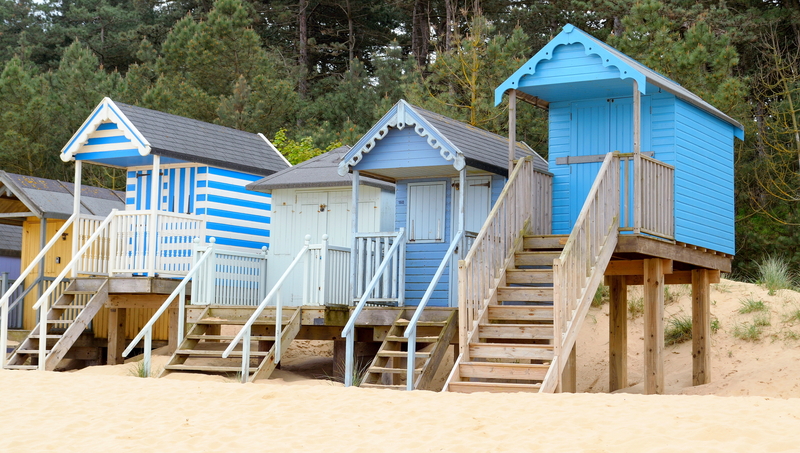Piano Moving: A Task Best Left to Professionals
Posted on 25/06/2025
The piano is not just a musical instrument but often a cherished family heirloom, representing both sentimental and material value. When it's time to relocate a piano, whether it's an upright or a grand, the notion of DIY piano moving might cross your mind. But is it worth the risk?
In this comprehensive guide, we explore why hiring professional piano movers is essential, what's involved in the process, the risks of moving a piano yourself, and how to choose the right specialists for a seamless relocation. By the end, you'll understand why piano moving is truly a task best left to professionals.
Why Is Moving a Piano So Challenging?
The Sheer Size and Weight of Pianos
Even the smallest pianos are impressively hefty instruments. Here's a quick look at the typical weights:
- Spinet piano: 200-400 lbs
- Upright piano: 400-800 lbs
- Baby grand piano: 500-600 lbs
- Concert grand piano: 900-1,200 lbs
Imagine attempting to maneuver such weight through narrow hallways, up or down stairs, or even across uneven terrain. The unique shapes, awkward weight distribution, and delicate components, such as the legs, pedals, strings, and soundboard, further complicate the task.
Delicate and Complicated Construction
Pianos are not only heavy, they are also incredibly delicate. Approximately 10,000 moving parts make up the standard piano, all working in harmony to produce beautiful music. Vibrations, jolts, or improper angling during transit can cause permanent structural or tuning damage.

The Risks of DIY Piano Moving
Personal Injury Risks
- Back strain or slipped discs from improper lifting
- Crushed fingers or toes
- Slips, trips, and falls
Moving a piano often requires careful coordination among several people--one mistake can cause serious accidents, injuries, and costly medical bills.
Damage to Property and the Instrument
- Dented walls, scratched floors, and damaged door frames
- Broken piano legs, chipped keys, or cracked soundboards
- Mishandling can lead to issues requiring expensive restoration
Insurance often does not cover damages caused by amateur moving attempts. Professional piano moving companies carry specialized insurance and necessary liability coverage for such jobs.
What Makes Professional Piano Movers Different?
Specialized Training and Equipment
Piano moving professionals are trained in the technicalities of carefully disassembling, securing, and transporting pianos. They utilize the right tools for the job:
- Heavy-duty piano dollies
- Stair ramps and customized straps
- Padded covers and moving blankets
- Skid boards for grand pianos
Experience and Expertise
Years of experience provide professional movers with the know-how to navigate tight corners, stairwells, and elevators without a hitch. They plan the move in detail, including how to dismantle and reassemble legs, pedals, or other vulnerable parts, ensuring your piano arrives safely and ready to play.
Proper Transportation
Transporting a piano requires more than a pickup truck. Expert piano moving services use climate-controlled, padded moving vans to protect your instrument from humidity and temperature fluctuations--a critical factor for delicate wooden frames and tuning stability.
The Professional Piano Moving Process
1. Assessment and Planning
The process begins with an on-site assessment. Movers evaluate the size, type, and condition of your piano; the layout of your home (including stairs, sharp corners, and pathways); and plan the safest removal route.
2. Preparation and Packing
Movers disassemble necessary components (such as music stands or legs) and wrap each part in thick moving blankets. Masterful padding techniques ensure every inch is protected against bumps and scrapes.
3. Safe Lifting and Loading
With specialized dollies, ramps, and at least 2-4 skilled movers, the piano is lifted and secured for transportation. Each move is choreographed to prevent accidents, relying on teamwork and communication.
4. Secure Transport
Your piano is loaded into a truck equipped with stabilization mechanisms to prevent shifting. During transit, climate control protects it from warping or cracking due to temperature and humidity changes.
5. Unloading and Set Up
Upon arrival, the process is reversed, with movers carefully moving the piano into its new home, reassembling parts, and ensuring correct placement. Some companies offer additional tuning services to restore the instrument to perfect harmony after moving.
Why Hiring Piano Movers Is Worth Every Penny
Insurance and Liability
Professional piano movers carry specific insurance for instrument transport, which safeguards your investment. Should the unthinkable happen, you're covered--unlike self-moves, where most homeowners' insurance doesn't offer coverage for such damage.
Peace of Mind
Entrusting your beloved piano to experts means you avoid the stress and physical hardship of moving heavy, awkward objects. You'll not only spare yourself frustration and potential injury but also ensure the safety of your home and family.
Efficient and Time-Saving
With the right expertise and equipment, a move that might take amateurs an entire arduous day can be accomplished in just a few hours. Professional piano movers free up your time and let you focus on other aspects of your move.
The Costs of Professional Piano Moving
Though costs vary by location and difficulty, the price of piano moving services generally reflects:
- The size and type of piano
- The presence of stairs or challenging access
- The transport distance
- Additional services (storage, tuning, or assembly)
On average:
- Local upright piano move: $150 - $300
- Local grand piano move: $200 - $500
- Long-distance moves: $500 - $1,500
While it might seem expensive, these costs are minimal compared to the potential expenses of repairing structural damage--or replacing a cherished instrument--caused by self-moves gone wrong.
How to Choose the Right Piano Movers
Look for Specialized Experience
Always opt for companies advertising piano moving or specialty instrument relocation services, rather than generic moving companies. Ask for references and check online reviews specific to their piano relocation experience.
Check Licenses and Insurance
Request verification of liability insurance, cargo insurance, and relevant state or municipal permits. Reputable movers have no issue providing documentation for your peace of mind.
Get a Detailed Estimate
Request a breakdown of fees, including potential extra charges for stairs, long-distance hauls, or special equipment. Reliable piano moving companies provide clear, upfront pricing.
Ask About the Moving Process
- How will they protect your instrument?
- What equipment do they use?
- How many team members will handle the move?
- Is tuning service provided after relocation?
Don't Forget Post-Move Piano Care
A piano's delicate mechanics and wooden structure are sensitive to environmental changes. After a move:
- Give the instrument at least 2-3 weeks to acclimate to its new environment before tuning.
- Monitor temperature and humidity (ideally 40-50% relative humidity).
- Arrange for a professional piano tuner to ensure optimal sound quality.
This post-move attention ensures your piano continues to inspire music for years to come.

Frequently Asked Questions About Piano Moving
Can regular movers handle a piano move?
It's best to work with movers specializing in pianos. Moving companies lacking experience and proper tools may inadvertently cause costly damage.
How long does a professional piano move take?
Local moves usually take 2-4 hours, depending on piano size and access. Long-distance moves depend on scheduling and transportation logistics.
Will my piano need to be disassembled?
For tight spaces or grand pianos, some disassembly (legs, pedals, music stands) may be necessary for safety and maneuverability. Experienced piano movers know when and how to take these steps properly.
How often should a piano be tuned after moving?
Once your piano has acclimated to its new home (about 2-3 weeks), book a professional tuning service. Moving can affect pitch and tonal stability, particularly for older or finely tuned instruments.
Final Thoughts: Leave Piano Moving to the Pros
Piano moving is a complex, risky task that demands expertise, specialized equipment, and careful planning. By entrusting the job to seasoned professionals, you protect your cherished instrument, your property, and your health.
Whether you own a vintage upright, a stately baby grand, or a concert grand masterpiece, remember: piano moving is best left to professionals. Let their experience, tools, and dedication bring peace of mind--and keep the music playing for generations to come.
Ready for a Stress-Free Piano Move?
If you're considering moving your piano, don't take unnecessary risks. Contact local piano moving experts in your area for a free assessment and discover how simple, safe, and efficient professional piano moving can be.



